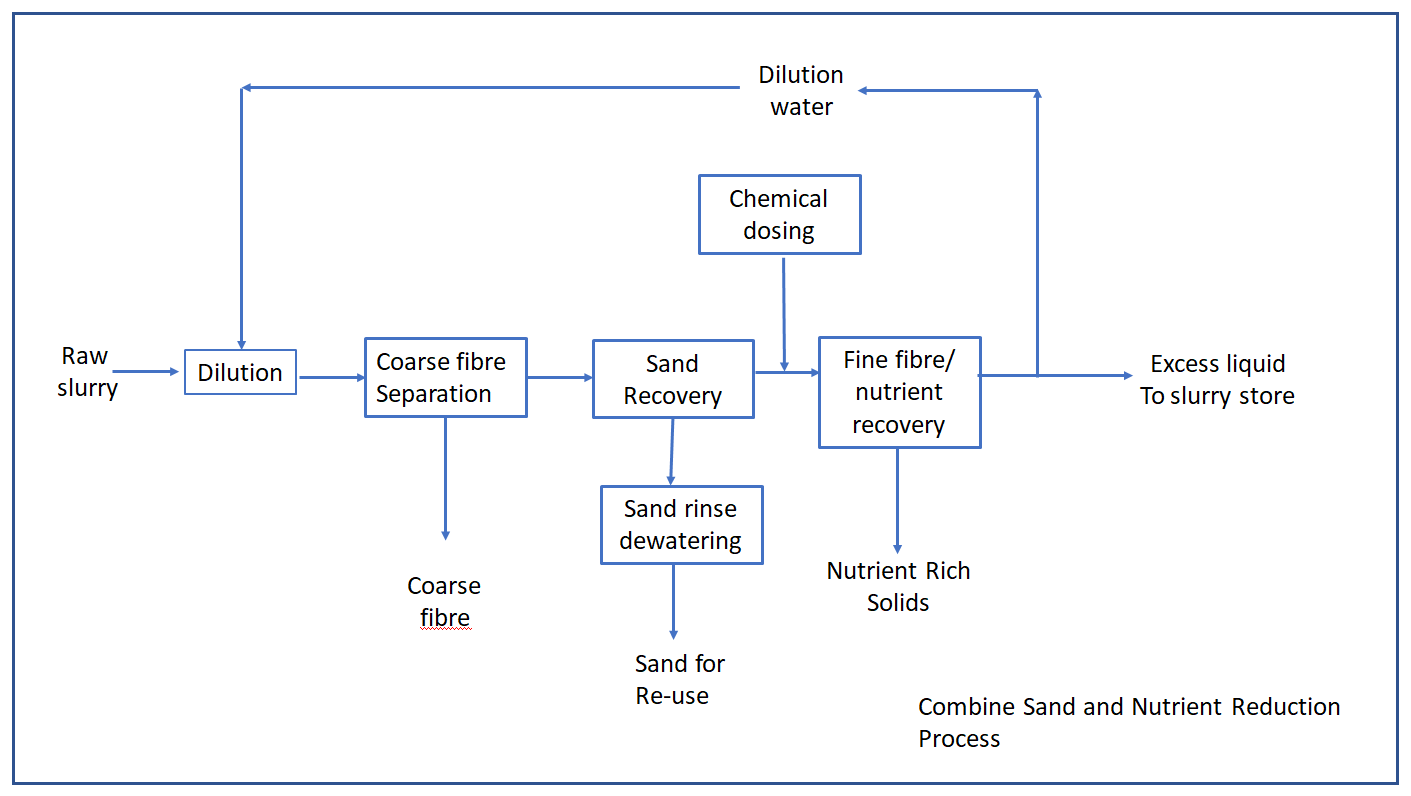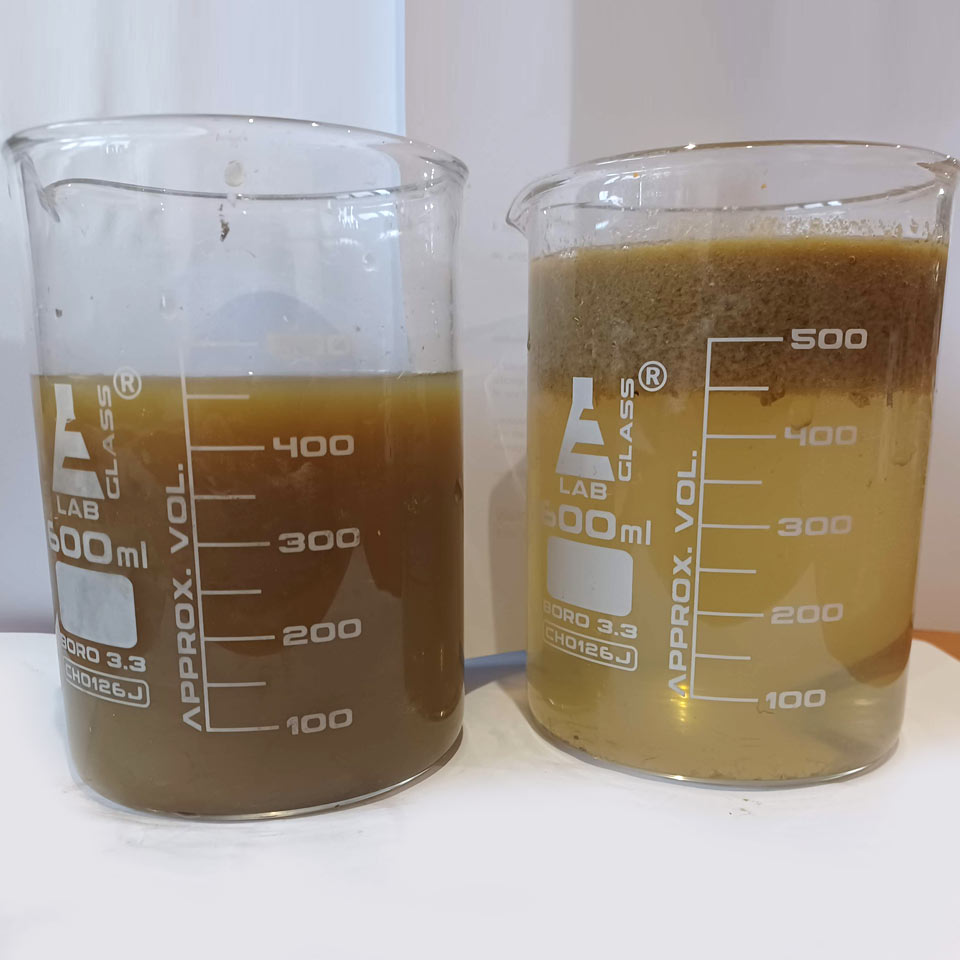Nutrient Removal and Water Reuse
Growing public concern about the poor state of the UK’s rivers and waterways has led to increased concern about diffuse pollution from agricultural runoff. In particular phosphorous/phosphate contaminate causing algal blooms.
Spreading the slurry to land can lead to a build-up of excess phosphorous concentrations in the soil leading to a long-term diffuse source of pollution.
As most of the phosphorous is dissolved in the slurry, separation of organic matter is of limited benefit. Phosphorous can however be removed as part of an integrated treatment process. Resulting in “Tea Water” with a low phosphorous concentration and a phosphorous rich sludge for use as an organic fertiliser.
Where required, additional process steps can be applied to make the water derived from the sufficiently clean for discharge to watercourse or ultimately re-use.
How does nutrient removal work?
- The slurry is first processed to remove the coarse fibre and (if applicable) sand
- The phosphorous is treated chemically and removed as a solid along with the fine fibre
- The dissolved organic compound is removed by biological treatment
- If required, residual contaminants can be removed by membrane separation
Why Choose Sand Separation Systems?
Designed for UK Farmers
Specifically to recover the fine sand
Manufactured in the UK
Designed, built and supported by a UK Company
Promotes Sustainability
Sand is the second most scarce resource worldwide after water
Cost Savings
Reduces the cost of sand, amount of slurry storage required, disposal of sand laden slurry

